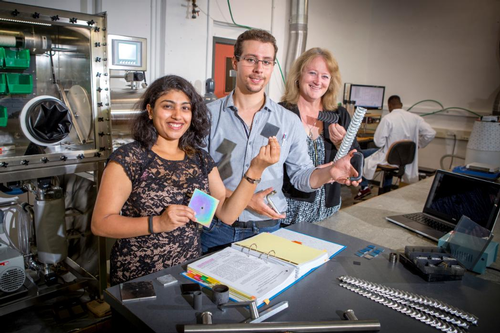Researchers Closer to Germ-Proof Surface Coating
MONDAY, MARCH 4, 2019
Researchers from the Department of Mechanical and Materials Engineering at The University of Canterbury (Christchurch, New Zealand) are on the verge of developing a germ-proof surface coating.
Once commercially available, the anti-microbial coating can be applied to high-traffic areas, helping to minmize infections spread within hospitals around the world.
The Research
Research lead, Susan Krumdieck, a professor at the university, has been working with titanium oxide, a ceramic compound, for over a decade. The traditionally bright white or transparent coating suddenly transformed while she and her team were conducting research, resulting in an all-black color.
TiO2 is well-known for its use in sunscreens because it can absorb radiation. During this process, energy is created and is expressed as oxygen ions, which are deadly to bacteria. This property value makes it ideal for use on surfaces in environments where sterility is a priority.

 |
| University of Canterbury |
|
Researchers from the Department of Mechanical and Materials Engineering at The University of Canterbury (Christchurch, New Zealand) are on the verge of developing a germ-proof surface coating. |
“We set it aside because we really didn’t know what had happened,” said Krumdieck.
“But then some undergraduate project students tested it for the self-cleaning performance, and it was so photocatalytically active without any UV radiation that we knew we had discovered something new.”
Later, at The Université Grenoble Aples (Grenoble, France), Raphaël Boichot and other researchers at the SiMAP Institute were able to analyze the same black coating samples.
Their analysis showed that instead of the typical smooth pyramid crystals of TiO2, the crystals in the black-colored substance were nanostructured in ways only possible through hydrothermal growth of individual nanoparticles. This suggested that the material could potentially have visible light antimicrobial activity.
“Sure enough, the bacteria did not stand a chance—even after a short time in visible light,” said Jack Heinemann, an expert in microbiology at UC.
With no need for radiation to energize the new form of TiO2, the university is moving forward with developing commercial applications. Having already successfully applied the black coating onto a door handle, they are now working with several companies to complete the engineering development science necessary for designing and upscaling for advance manufacture.
Tagged categories: Ceramic coatings; Coating chemistry; Coating Materials; Coating Materials - Commercial; Coating types; Coatings Technology; Colleges and Universities; D+D; PaintSquare App - Commercial; Research; Research and development



